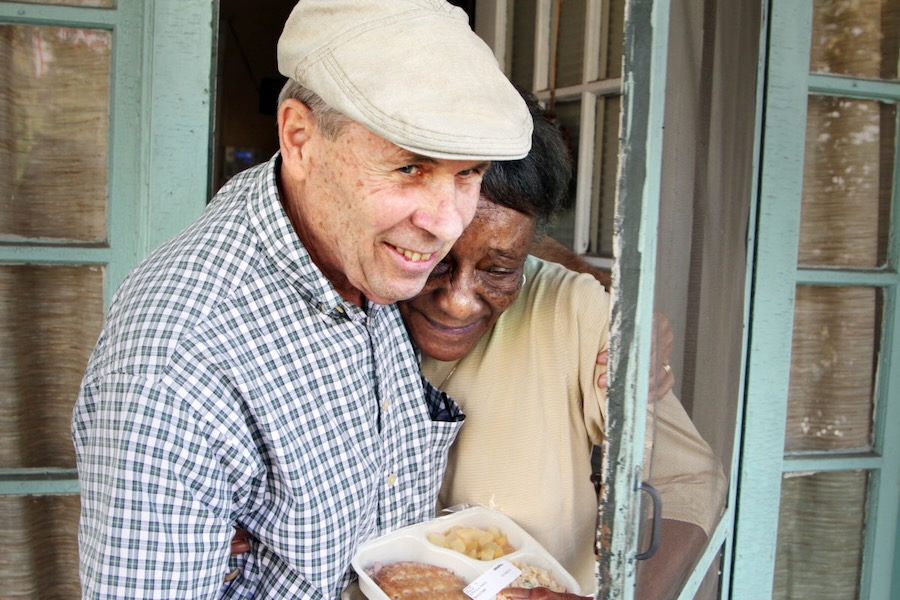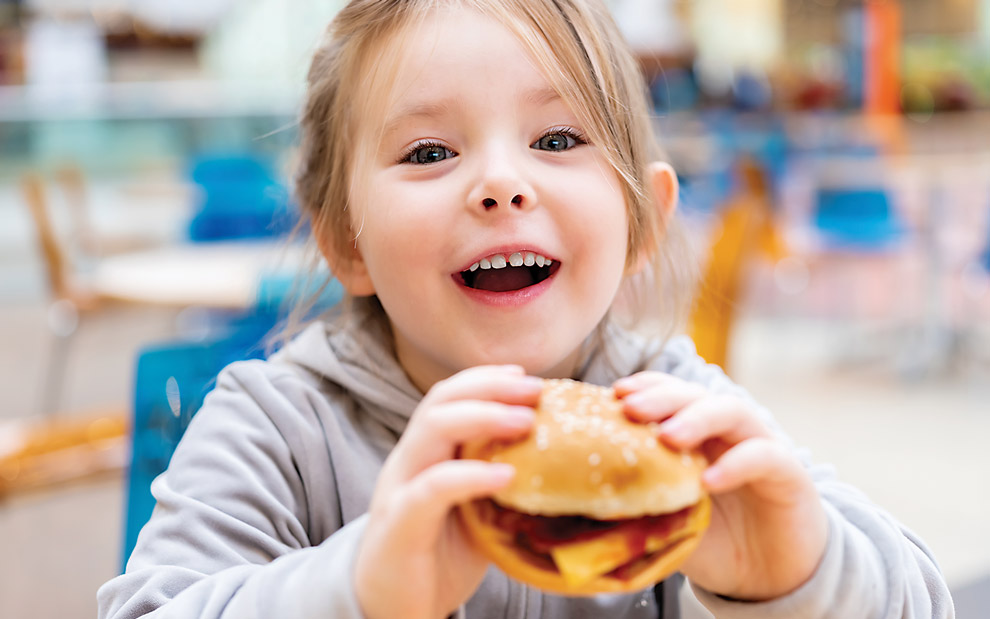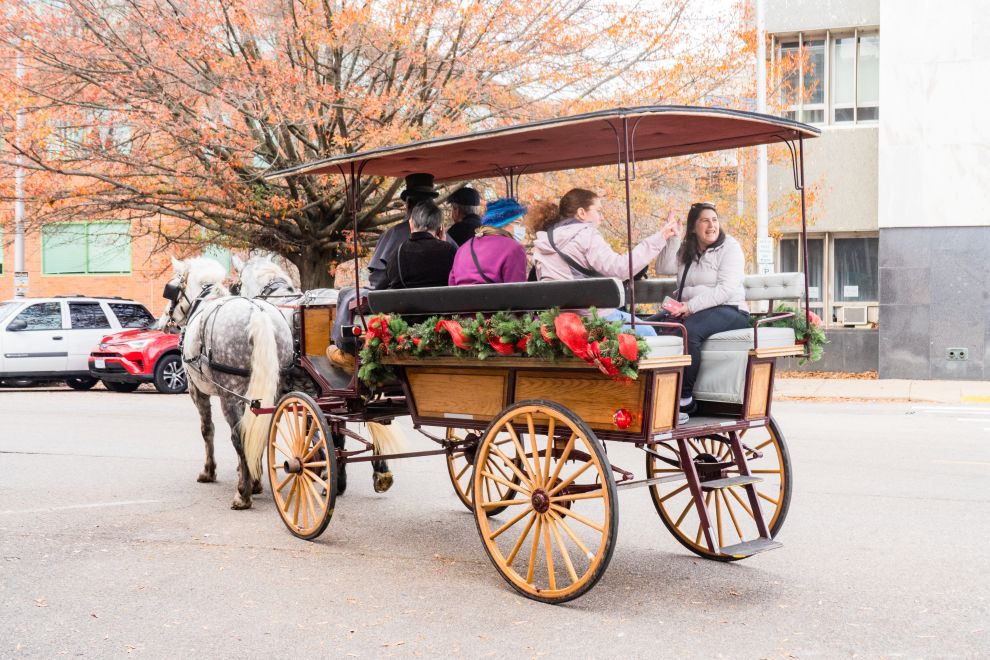The largest federal hunger relief program in the United States, the Supplemental Nutrition Assistance Program (SNAP) helps more than 877,000 Virginians statewide and brings an additional $150 million to Virginia’s economy. Not only does SNAP help families afford food, but for every dollar spent on SNAP, another $1.50 is injected into local economies. Around 15 percent of SNAP participants are seniors and an additional 12 percent of SNAP participants have a disability.
Normally, SNAP benefits cannot be used to purchase hot, prepared foods (food at retailers, restaurants, food trucks, etc.). This can cause problems for some seniors and individuals who have disabilities, as they may have limitations that prevent them from cooking their meals. Additionally, people who are experiencing homelessness often do not have access to refrigerators to store their food or microwaves or ovens to cook or heat their food.
Why the Restaurant Meals Program Is Important
One solution to this access issue is the Restaurant Meals Program, a state option that allows seniors, individuals with permanent disabilities, and those who are experiencing homelessness to use their SNAP benefits at participating restaurants. The program is beneficial for restaurants and the communities in which they are located, as it expands revenue opportunities while improving access to prepared meals for low-income and vulnerable community members.
In 2020, the Virginia General Assembly elected to implement the Restaurant Meals Program option so eligible Virginians have access to hot, prepared meals. For a restaurant to participate in the Restaurant Meals Program, it must receive approval from the state and provide a signed agreement to the Food and Nutrition Service (FNS). This agency must approve the restaurant’s ability to accept SNAP payments. SNAP is loaded onto an electronic benefits transfer (EBT) card, which individuals can use to make eligible purchases.
Interested restaurants need to register with Virginia’s EBT vendor. There is a fee associated with the point-of-sale (POS) device necessary to accept payment via a patron’s EBT card. Other than the POS device fee, there is no cost for restaurants to participate in the program. According to the state Restaurant Meal Program website, it takes thirty to sixty days to become an authorized restaurant, and restaurants are usually reimbursed within twenty-four hours of the sale.
A list of participating restaurants can be found on the Virginia Department of Social Services website. Unfortunately, participation is low. As of June 2024, only sixteen restaurants are participating statewide and none are in the Richmond area. This is an important program that allows restaurants to support the community while bringing in additional revenue, and higher participation can help improve access to nutritious meals for food-insecure neighbors. Richmonders can help spread the word about the Restaurant Meals Program and encourage their favorite local spots to learn more and sign up by visiting dss.virginia.gov or sending an email to VRMP@dss.virginia.gov.
Using SNAP for Prepared Foods at Local Grocery Stores
The Restaurant Meals Program is a meaningful step toward ensuring that individuals have access to hot meals; however, the federal government is currently considering another option that would expand access more broadly. Both the House and Senate’s Farm Bills include a study examining the impact of allowing SNAP participants to purchase hot, prepared meals at the grocery store. The Hot Foods Act, which has bipartisan support, would allow all SNAP participants to purchase hot and prepared foods at the grocery store. Other items that cannot be purchased with SNAP benefits include cleaning products, toiletries, paper goods, and pet foods.
Think how convenient it is for someone in your family to purchase prepared food for all or part of a dinner. My partner or I will pick up a rotisserie chicken after a busy day, which makes meal prep easier and can often provide us with leftovers for the next day. Shopping options like this make it possible for individuals to access nutritious foods, even if they have a limited ability to cook or lack the appliances or space needed to prepare a meal at home. A rotisserie chicken often costs less than $10, but this quick, healthy, affordable choice is something that SNAP participants are currently prohibited from purchasing with their SNAP EBT card.
What About Food and Meal Delivery Options?
There are resources available right now to help SNAP applicants save time or meet household transportation or mobility needs. Many stores have an option to purchase groceries online using your SNAP EBT card. Unfortunately, you cannot use your SNAP benefits for delivery or membership fees. Still, some online programs provide additional options for individuals who may be homebound or who do not have access to transportation, allowing them to have groceries delivered to their homes. SNAP participants are encouraged to ask individual grocers about assistance.
Meals on Wheels may be another good option for homebound seniors and individuals with disabilities who are facing challenges related to food access. The program delivers meals to people’s homes and accepts payment through the SNAP program. Through Meals on Wheels, Feed More serves roughly 1,000 individuals in the Central Virginia region. Learn more about Meals on Wheels at feedmore.org.

Learn More About SNAP
Use Virginia Poverty Law Center’s online SNAP calculator to determine if you are eligible for help with food costs through the SNAP program. The SNAP calculator (vasnap.org) is easy to use and can take less than two minutes to determine your estimated benefit amount. The SNAP calculator is not associated with the Department of Social Services and is not an application for SNAP benefits. Individuals who want to apply for benefits can do so online at commonhelp.virginia.gov or by calling 855-635-4370.
Programs like SNAP help families in our communities. Whether you or someone you love is eligible for SNAP benefits or this is the first article you’ve read about SNAP, it’s important to spread the word about programs that help Virginia families put food on the table. Together, we can be part of the effort to end food insecurity.





